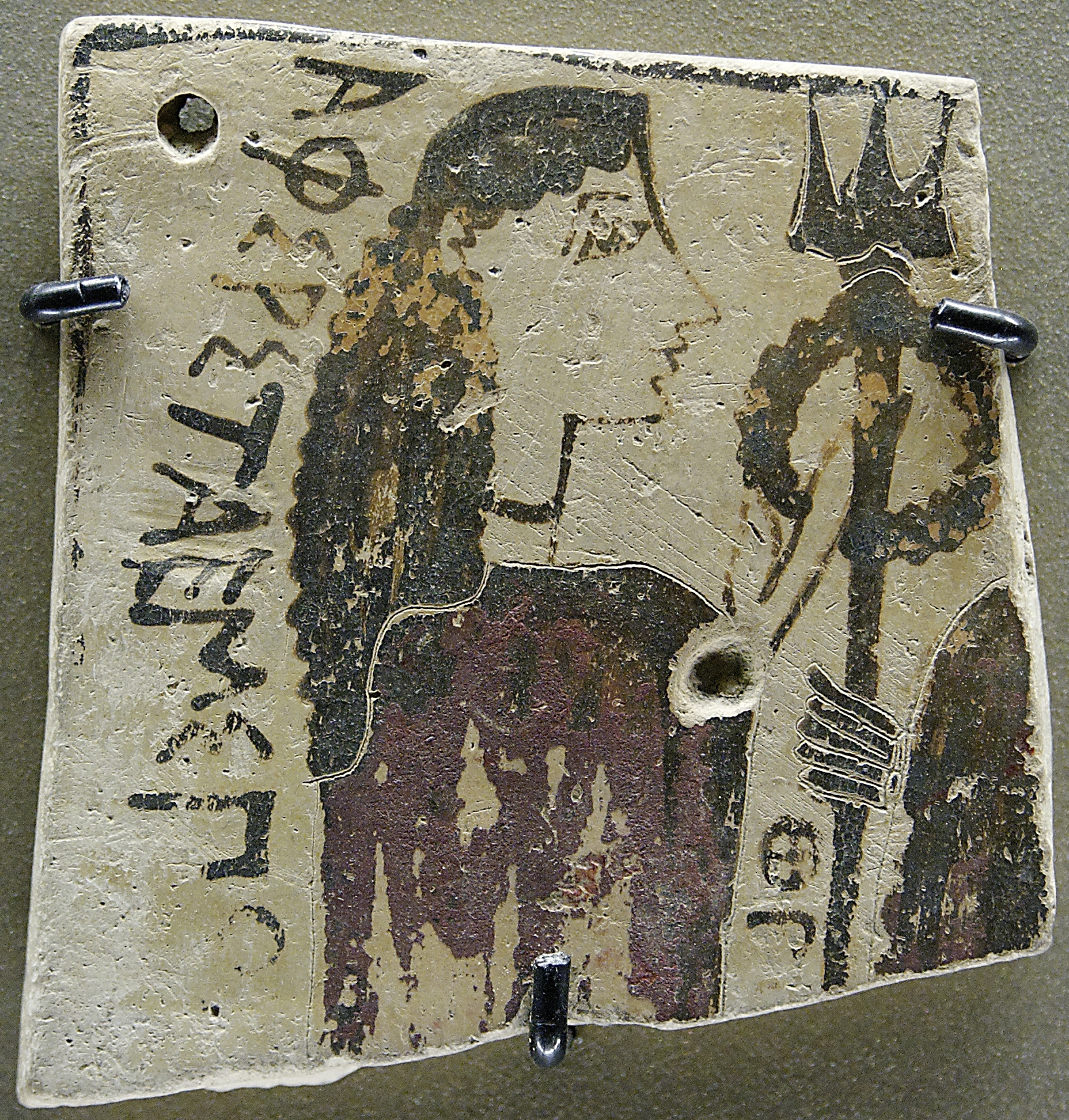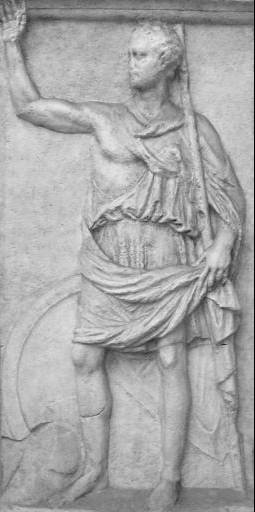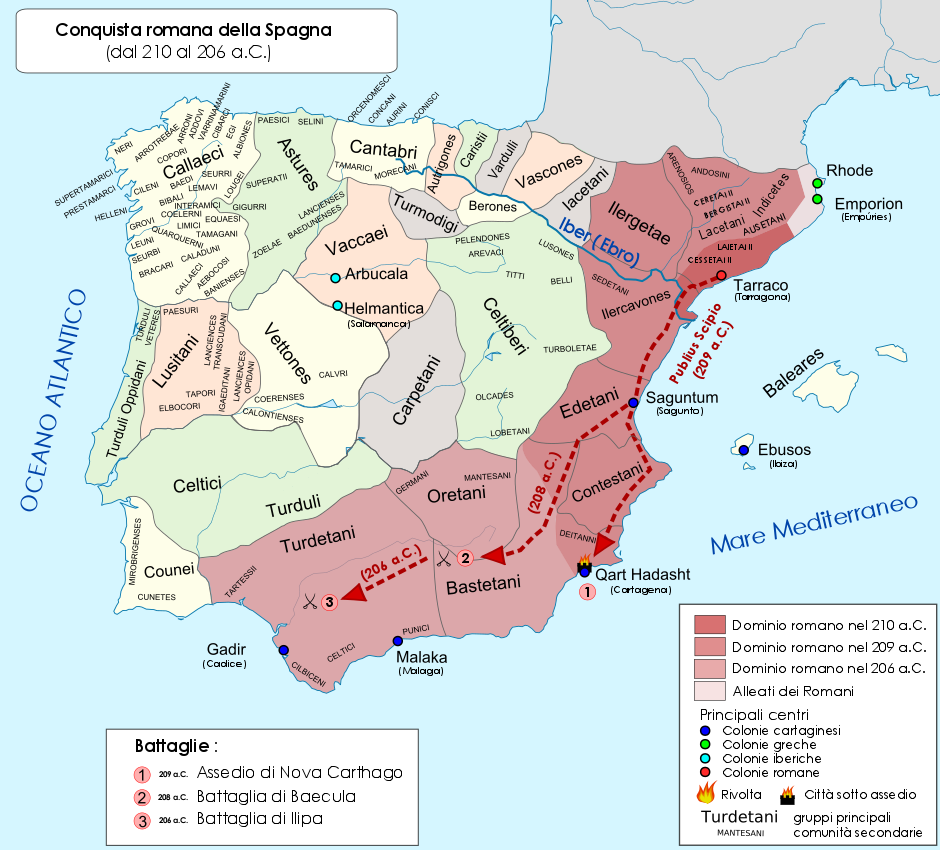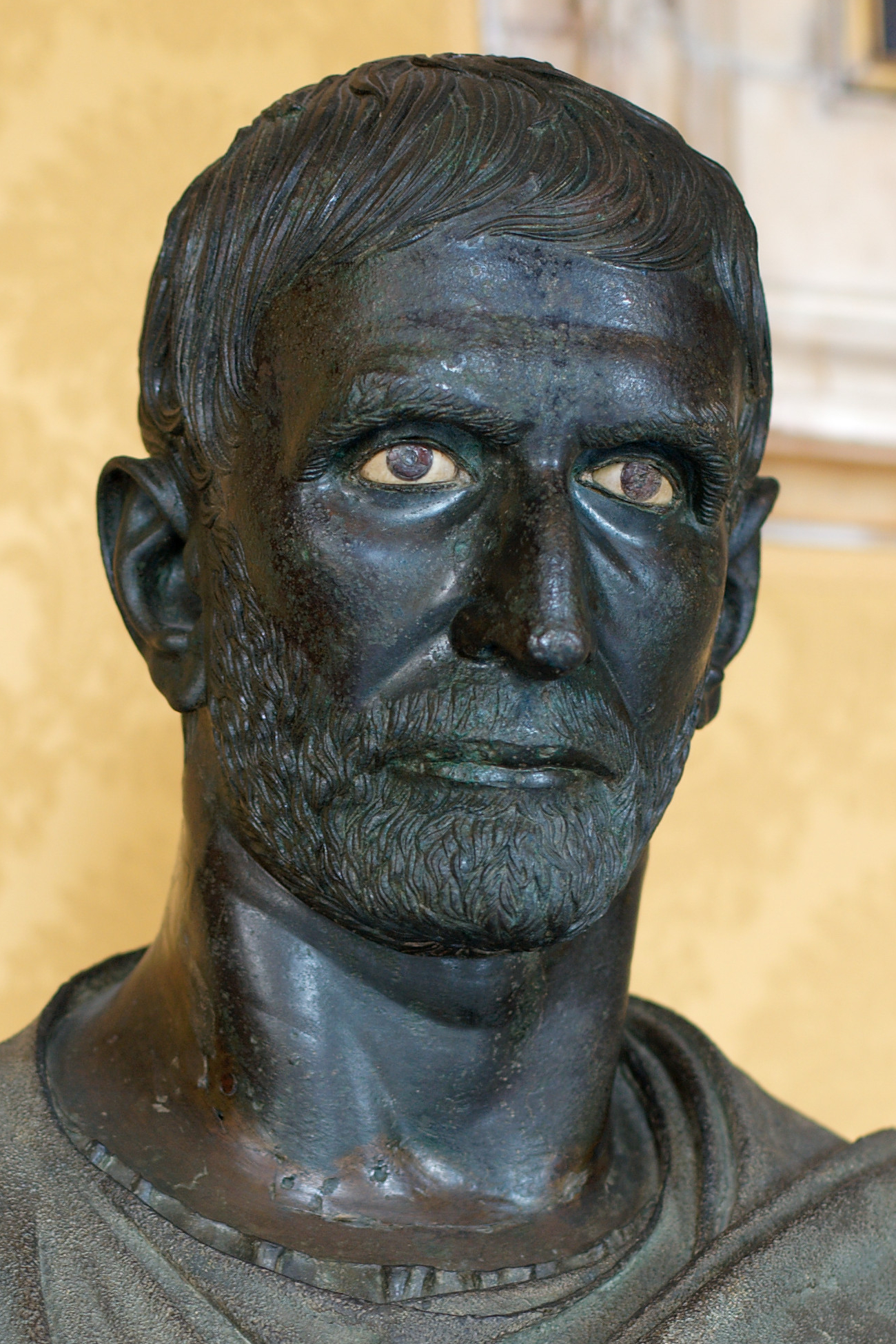|
Bulla Regia
Bulla Regia was a Berbers, Berber, Punics, Punic, and ancient Romans, Roman town near present-day Jendouba, Tunisia. Its surviving ruins and archaeological site are noted for their Emperor Hadrian, Hadrianic-era semi-subterranean housing, a protection from the fierce heat and effects of the sun. Many of the mosaic floors have been left in place; others may be seen at the Bardo Museum in Tunis. There is also a small museum connected with the site. Names The Punic language, Punic name of the town appears on its currency as (). This has been suggested to have been a contraction of (), meaning "House" or "Temple of Baal". The name Bulla Regia is Latin for "Royal Bulla". The epithet refers to its status as the Numidian capital under Masinissa. It was notionally refounded at the time of its elevation to Roman colonia, colony status and formally named ' after its imperial sponsor Hadrian. History Berber town A Berbers, Berber settlement probably predated the Punics, Punic one. I ... [...More Info...] [...Related Items...] OR: [Wikipedia] [Google] [Baidu] [Amazon] |
Tunisia
Tunisia, officially the Republic of Tunisia, is a country in the Maghreb region of North Africa. It is bordered by Algeria to the west and southwest, Libya to the southeast, and the Mediterranean Sea to the north and east. Tunisia also shares maritime borders with Italy through the islands of Sicily and Sardinia to the north and Malta to the east. It features the archaeological sites of Carthage dating back to the 9th century BC, as well as the Great Mosque of Kairouan. Known for its ancient architecture, Souks of Tunis, souks, and blue coasts, it covers , and has a population of 12.1 million. It contains the eastern end of the Atlas Mountains and the northern reaches of the Sahara desert; much of its remaining territory is arable land. Its of coastline includes the African conjunction of the western and eastern parts of the Mediterranean Basin. Tunisia is home to Africa's northernmost point, Cape Angela. Located on the northeastern coast, Tunis is the capital and List of cities ... [...More Info...] [...Related Items...] OR: [Wikipedia] [Google] [Baidu] [Amazon] |
Masinissa
Masinissa (''c.'' 238 BC – 148 BC), also spelled Massinissa, Massena and Massan, was an ancient Numidian king best known for leading a federation of Massylii Berber tribes during the Second Punic War (218–201 BC), ultimately uniting them into a kingdom that became a major regional power in North Africa. Much of what is known about Masinissa comes from Livy's '' History of Rome,'' and to a lesser extent Cicero's '' Scipio's Dream''. As the son of a Numidian chieftain allied to Carthage, he fought against the Romans in the Second Punic War, but later switched sides upon concluding that Rome would prevail. With the support of his erstwhile enemy, he united the eastern and western Numidian tribes and founded the Kingdom of Numidia. As a Roman ally, Masinissa took part in the decisive Battle of Zama in 202 BC that effectively ended the war in Carthage's defeat; he also allowed his wife Sophonisba, a famed Carthaginian noblewoman who had influenced Numidian affairs to Cartha ... [...More Info...] [...Related Items...] OR: [Wikipedia] [Google] [Baidu] [Amazon] |
Africa Nova
Numidia was a Roman province on the North African coast, comprising roughly the territory of northeastern Algeria. History The people of the area were first identified as Numidians by Polybius around the 2nd century BC, although they were often referred to as the Nodidians. ''Eastern Numidia'' was annexed in 46 BC to create a new Roman province, '' Africa Nova''. ''Western Numidia'' was also annexed as part of the province ''Africa Nova'' after the death of its last king, Arabio, in 40 BC, and subsequently the province (except of ''Western Numidia'') was united with province '' Africa Vetus'' by Emperor Augustus in 25 BC, to create the new province ''Africa Proconsularis''. During the brief period (30–25 BC) Juba II (son of Juba I) ruled as a client king of Numidia on the territory of former province ''Africa Nova''. In AD 40, the western portion of Africa Proconsularis, including its legionary garrison, was placed under an imperial ''legatus'', and in effect became a sep ... [...More Info...] [...Related Items...] OR: [Wikipedia] [Google] [Baidu] [Amazon] |
Roman Province
The Roman provinces (, pl. ) were the administrative regions of Ancient Rome outside Roman Italy that were controlled by the Romans under the Roman Republic and later the Roman Empire. Each province was ruled by a Roman appointed as Roman governor, governor. For centuries, it was the largest administrative unit of the foreign possessions of ancient Rome. With the administrative reform initiated by Diocletian, it became a third level administrative subdivision of the Roman Empire, or rather a subdivision of the Roman diocese, imperial dioceses (in turn subdivisions of the Praetorian prefecture, imperial prefectures). History A province was the basic and, until the Tetrarchy (from AD 293), the largest territorial and administrative unit of the empire's territorial possessions outside Roman Italy. During the republic and early empire, provinces were generally governed by politicians of Roman senate, senatorial rank, usually former Roman consul, consuls or former praetors. ... [...More Info...] [...Related Items...] OR: [Wikipedia] [Google] [Baidu] [Amazon] |
Julius Caesar
Gaius Julius Caesar (12 or 13 July 100 BC – 15 March 44 BC) was a Roman general and statesman. A member of the First Triumvirate, Caesar led the Roman armies in the Gallic Wars before defeating his political rival Pompey in Caesar's civil war, a civil war. He subsequently became Roman dictator, dictator from 49 BC until Assassination of Julius Caesar, his assassination in 44 BC. Caesar played a critical role in Crisis of the Roman Republic, the events that led to the demise of the Roman Republic and the rise of the Roman Empire. In 60 BC, Caesar, Marcus Licinius Crassus, Crassus, and Pompey formed the First Triumvirate, an informal political alliance that dominated Roman politics for several years. Their attempts to amass political power were opposed by many in the Roman Senate, Senate, among them Cato the Younger with the private support of Cicero. Caesar rose to become one of the most powerful politicians in the Roman Republic through a string of military victories in the G ... [...More Info...] [...Related Items...] OR: [Wikipedia] [Google] [Baidu] [Amazon] |
Amphitrite Bulla Regia
In ancient Greek mythology, Amphitrite (; ) was the goddess of the sea, the queen of the sea, and her consort is Poseidon. She was a daughter of Nereus and Doris (Oceanid), Doris (or Oceanus and Tethys (mythology), Tethys).Roman, L., & Roman, M. (2010). Under the influence of the Olympian pantheon, she became the consort of Poseidon and was later used as a symbolic representation of the sea. Her Interpretatio graeca#Interpretatio romana, Roman counterpart is Salacia (mythology), Salacia, a comparatively minor figure, and the goddess of saltwater. Family According to Hesiod's ''Theogony'', Amphitrite was one of the 50 Nereid daughters of Nereus and Doris (Oceanid), Doris. The mythographer Bibliotheca (Pseudo-Apollodorus), Apollodorus, however, lists her among both the Nereids, as well as the Oceanids, the daughters of Oceanus and Tethys (mythology), Tethys. Amphitrite's offspring included seals and dolphins. She also bred sea monsters and her great waves crashed against the r ... [...More Info...] [...Related Items...] OR: [Wikipedia] [Google] [Baidu] [Amazon] |
Hellenistic
In classical antiquity, the Hellenistic period covers the time in Greek history after Classical Greece, between the death of Alexander the Great in 323 BC and the death of Cleopatra VII in 30 BC, which was followed by the ascendancy of the Roman Empire, as signified by the Battle of Actium in 31 BC and the Roman conquest of Ptolemaic Egypt the following year, which eliminated the last major Hellenistic kingdom. Its name stems from the Ancient Greek word ''Hellas'' (, ''Hellás''), which was gradually recognized as the name for Greece, from which the modern historiographical term ''Hellenistic'' was derived. The term "Hellenistic" is to be distinguished from "Hellenic" in that the latter refers to Greece itself, while the former encompasses all the ancient territories of the period that had come under significant Greek influence, particularly the Hellenized Middle East, after the conquests of Alexander the Great. After the Macedonian conquest of the Achaemenid Empire in ... [...More Info...] [...Related Items...] OR: [Wikipedia] [Google] [Baidu] [Amazon] |
Second Punic War
The Second Punic War (218 to 201 BC) was the second of Punic Wars, three wars fought between Ancient Carthage, Carthage and Roman Republic, Rome, the two main powers of the western Mediterranean Basin, Mediterranean in the 3rd century BC. For 17 years the two states struggled for supremacy, primarily in Roman Italy, Italy and Iberia, but also on the islands of Sicily and Sardinia and, towards the end of the war, in North Africa. After immense materiel and human losses on both sides, the Carthaginians were once again defeated. Macedonia (ancient kingdom), Macedonia, Kingdom of Syracuse, Syracuse and several Numidians, Numidian kingdoms were drawn into the fighting, and Celtiberians, Iberian and Gauls, Gallic forces fought on both sides. There were three main Theater (military), military theatres during the war: Italy, where Hannibal defeated the Roman legions repeatedly, with occasional subsidiary campaigns in Sicily, Sardinia and Greece; Iberia, where Hasdrubal (Barcid), Hasdru ... [...More Info...] [...Related Items...] OR: [Wikipedia] [Google] [Baidu] [Amazon] |
Scipio Africanus
Publius Cornelius Scipio Africanus (, , ; 236/235–) was a Roman general and statesman who was one of the main architects of Rome's victory against Ancient Carthage, Carthage in the Second Punic War. Often regarded as one of the greatest military commanders and strategists of all time, his greatest military achievement was the defeat of Hannibal at the Battle of Zama in 202 BC. This victory in Africa earned him the honorific epithet ''Africanus'', literally meaning 'the African', but meant to be understood as a conqueror of Africa (Roman province), Africa. Scipio's conquest of Carthaginian Iberia culminated in the Battle of Ilipa in 206 BC against Hannibal's brother Mago Barca. Although considered a hero by the Roman people, primarily for his victories against Carthage, Scipio had many opponents, especially Cato the Elder, who hated him deeply. In 187 BC, he was tried in a show trial alongside his brother for bribes they supposedly received from the Seleucid king Antiochus III ... [...More Info...] [...Related Items...] OR: [Wikipedia] [Google] [Baidu] [Amazon] |
Roman Republic
The Roman Republic ( ) was the era of Ancient Rome, classical Roman civilisation beginning with Overthrow of the Roman monarchy, the overthrow of the Roman Kingdom (traditionally dated to 509 BC) and ending in 27 BC with the establishment of the Roman Empire following the War of Actium. During this period, Rome's control expanded from the city's immediate surroundings to hegemony over the entire Mediterranean Sea, Mediterranean world. Roman society at the time was primarily a cultural mix of Latins (Italic tribe), Latin and Etruscan civilization, Etruscan societies, as well as of Sabine, Oscan, and Greek cultural elements, which is especially visible in the Ancient Roman religion and List of Roman deities, its pantheon. Its political organisation developed at around the same time as direct democracy in Ancient Greece, with collective and annual magistracies, overseen by Roman Senate, a senate. There were annual elections, but the republican system was an elective olig ... [...More Info...] [...Related Items...] OR: [Wikipedia] [Google] [Baidu] [Amazon] |
Tanit
Tanit or Tinnit (Punic language, Punic: 𐤕𐤍𐤕 ''Tīnnīt'' (JStor)) was a chief deity of Ancient Carthage; she derives from a local Berber deity and the consort of Baal Hammon. As Ammon is a local Libyan deity, so is Tannit, who represents the Matriarchy, matriarchal aspect of Numidians, Numidian society, whom the Egyptians identify as Neith and the Ancient Greece, Greeks identify as Athena. She was the goddess of wisdom, civilization and the crafts; she is the defender of towns and homes where she is worshipped. Ancient North Africans used to put her sign on tombstones and homes to ask for protection her main temples in Sanctuary of Thinissut, Thinissut (Bir Bouregba, Tunisia), Cirta (Constantine, Algeria), Lambaesis (Batna (city), Batna, Algeria) and Theveste (Tébessa, Tebessa, Algeria). She had a yearly festival in Antiquity which persists to this day in many parts of North Africa but was banned by Muammar Gaddafi in Libya, who called it a pagan festival. Tannit was also ... [...More Info...] [...Related Items...] OR: [Wikipedia] [Google] [Baidu] [Amazon] |
Baal Hammon
Baal Hammon, properly Baʿal Ḥamon ( Phoenician and ), meaning "Lord Hammon", was the chief god of ancient Carthage. He was a weather god considered responsible for the fertility of vegetation and esteemed as king of the gods. He was depicted as a bearded older man with curling ram's horns. Baʿal Ḥammon's female cult partner was Tanit. Etymology He is identified as one of the Phoenician deities covered under the name of Baal. However, the meaning of his second name is unclear. Frank Moore Cross argued for a connection to ''Hamōn'', the Ugaritic name for Mount Amanus, a peak in the Nur Mountains that separate Syria from Cilicia. In the 19th century, when Ernest Renan excavated the ruins of Ḥammon, now Umm al-Amad, between Tyre and Acre, he found two Phoenician inscriptions dedicated to El-Ḥammon. Others have proposed Ḥammon as a syncretic association with Amun, the god of ancient Libya, In Siwa Oasis, a solitary oracle of Amun remained near the Libyan Desert, wh ... [...More Info...] [...Related Items...] OR: [Wikipedia] [Google] [Baidu] [Amazon] |










